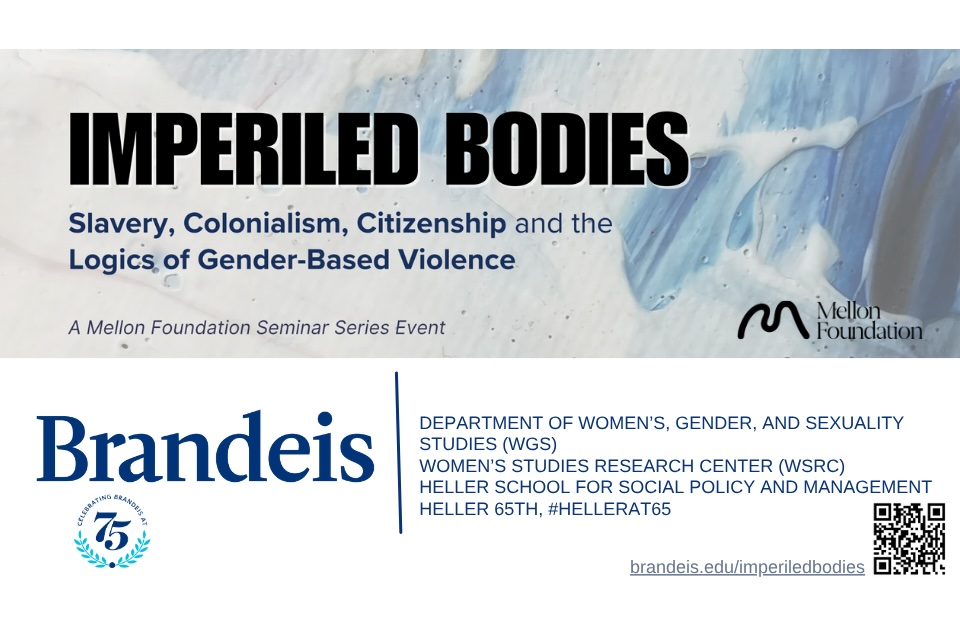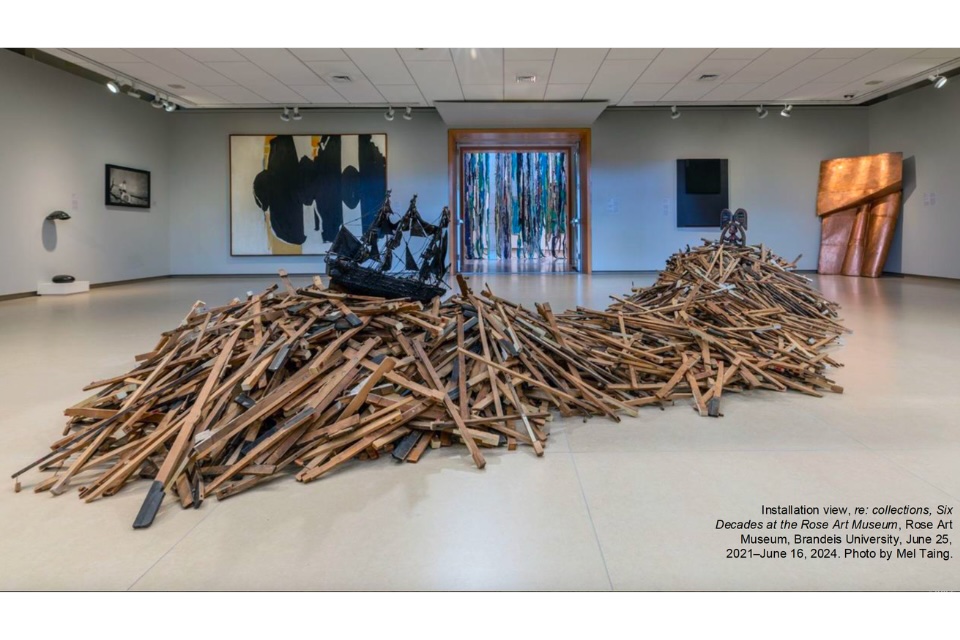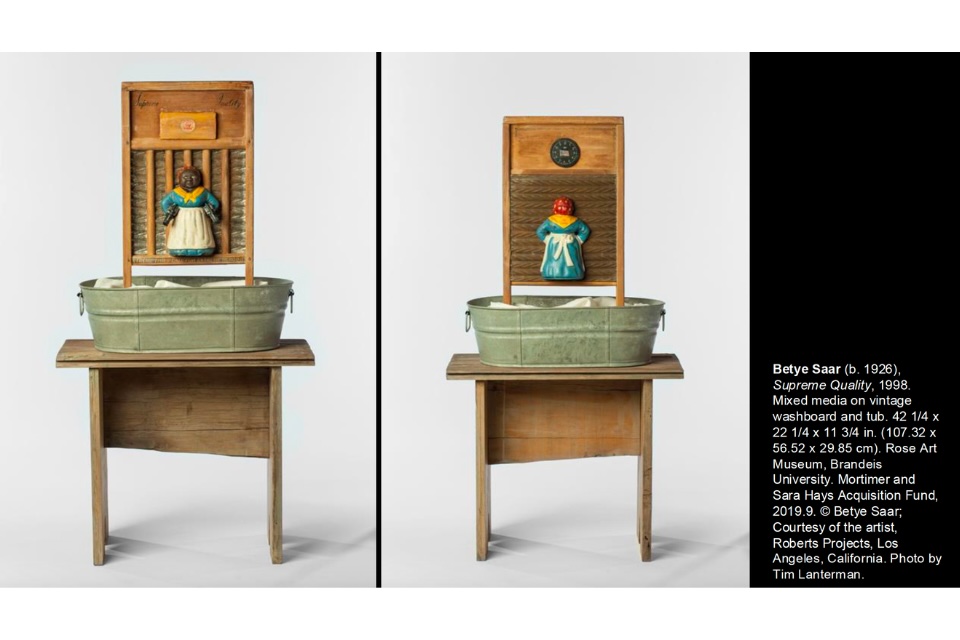Imperiled but Not Invisible: Art from the Rose Art Museum
On October 9th, 2025, the Mellon Sawyer seminar hosted the session “Imperiled but Not Invisible: Art from the Rose Art Museum,” co-organized and facilitated by Gannit Ankori (Henry and Lois Foster Director and Chief Curator, Rose Art Museum, and Professor of Fine Arts and Women's, Gender, and Sexuality Studies, Brandeis University) and Faith Smith (Marta F. Kauffman '78 Professor of African and African American Studies, Professor of English, and Affiliate in Creativity, the Arts, and Social Transformation, Latin American, Caribbean and Latin Studies, and Women’s, Gender and Sexuality Studies, Brandeis University). The session explored how contemporary Black artists affiliated with the Rose Art Museum memorialize imperiled bodies from transatlantic slavery to the present.
Gannit Ankori and Faith Smith examined a range of artworks on display at the Rose Art Museum since 2021. Contextualizing the discussion within what Ankori called “endangering architecture” in the United States ranging from enslavement, to ethnographic capture, to systemic threats of rape, to the AIDS crisis, to present-day assaults on reproductive freedoms and DEI, Ankori and Smith showcased the Rose Art Museum’s work to interrogate museum spaces as sites of layered reckoning. For example, Ankori discussed Radcliffe Bailey’s “Storm at Sea” (2007), a piece featuring disarticulated piano keys forming wave-like strands of DNA linking a slave ship and a replica of a sculpture of Shango, the Yoruba God of Thunder and Lightning. Sprawling across the lower gallery, Bailey’s piece worked to “voice a visual lament” on the forcible migration of Africans to the Americas. Reflecting on the imperilment of Black women in both slavery and post-slavery contexts, Faith Smith later turned to Betye Saar’s mixed-media piece “Supreme Quality” (1998). Featuring a washboard, a tub, and a found image of Aunt Jemima as a consolidation of the mammy stereotype, this piece reclaims the mammy figure to denaturalize the exploitation of Black women’s labor within what Smith termed the “architecture of white domesticity.”
From Hugh Hayden’s use of thorny wood carvings to expose the uninhabitability of the American Dream, to Myra Green’s questioning of the “features of race” via the wet plate collodion photographic technique employed by nineteenth-century ethnographers in Untitled (2016), to Nona Faustine’s crafting of a Black warrior womanhood in dialogue with the iconographies of Black Power, to Jon Henry’s “Stranger Fruit” series reimagining, via Billie Holiday, Michelangelo’s La Pietàs to memorialize murdered Black sons, this session offered a visually striking reflection on contemporary Black art at the limits of imperilment.
Posted by Carmel Ohman, July 2, 2025
This event marked the ninth and final session of the year-long Mellon Sawyer Seminar, “Imperiled Bodies: Slavery, Colonialism, Citizenship and the Logics of Gender-Based Violence” led by PI Anita Hill, co-PI Harleen Singh, and ChaeRan Freeze at Brandeis University. Brandeis University sponsors and resources include the Heller School for Social Policy and Management, the Department of Women’s, Gender, and Sexuality Studies, the Women’s Studies Research Center, the Mandel Center for the Humanities, the Hadassah Brandeis Institute, the Feminist Sexual Ethics Project, the Rose Art Museum, the Kniznick Art Gallery, the Gender and Sexuality Center, and the Prevention, Advocacy, and Resource Center. This seminar is among the signature events of the Heller 65th Anniversary year, Celebrating Knowledge Advancing Social Justice #Hellerat65.



